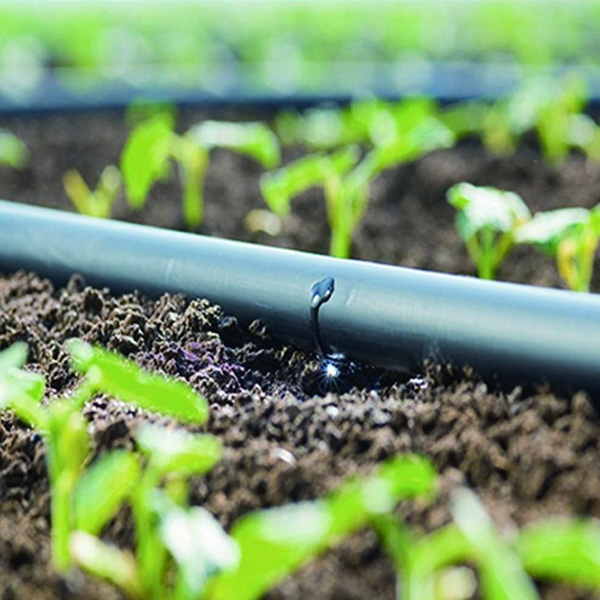
(This FAQ was compiled from The Urban Farmer Store Guide to Drip Irrigation).
What is drip irrigation?
Drip irrigation is the slow and precise delivery of water to chosen plantings. It maintains near-perfect moisture levels in the root zone of plants, avoiding the too wet/too dry swings typical of overhead watering
Why install or switch to drip irrigation?
To save water
For many gardeners, water conservation is the main reason for installing a drip system. When you water your garden, your purpose is to water plants rather than soil. Drip irrigation gives you the ability to put water exactly where it’s needed and keep paths and areas between plants dry. This reduces both waste and weeding. You can regulate precisely the amount of water used during irrigation so that nearly all of it remains in the root zone. Water lost to evaporation is negligible compared to overhead watering. Traditional watering methods deliver water faster than most soils can absorb. If water exceeds the soil’s percolation rate, it can only run off the surface, taking valuable topsoil and nutrients with it.
To save time
The greatest advantage for the home gardener is time savings. The simple action of opening a valve replaces all the time spent watering by hand. With the addition of an automatic timer, you can go on vacation or cope with a busy schedule while your garden flourishes without you. Drip irrigation also allows you to water a large area from a small water source, since it uses water more slowly than other methods.
What can you irrigate with drip?
Drip systems irrigate all types of landscape: shrubs, trees, perennial beds, ground covers, annuals and lawns. Drip is the best choice to water roof gardens, containers on decks and patios, row crops and kitchen gardens, orchards, and vineyards. On a slope, drip can be designed for minimum run-off and, is often the only means of bringing a hillside into cultivation.
How does drip irrigation affect plants?
A drip system produces healthy, fast-growing plants. In fact, improved crop yields were the primary force behind the development of drip irrigation for agriculture. In traditional watering methods there is an extreme fluctuation in the water content, temperature, and aeration of the soil, resulting in plant stress. Drip watering keeps the moisture content of soil relatively constant and ensures that oxygen remains available to the root system. Installing drip to new plants will help them develop deep roots which are more resistant to dry spells.
How does a drip system work?
Drip systems are controlled manually or automatically by a digital timer, and use flexible polyethylene tubing with devices for dripping water (drip lines, emitters & low-volume sprays). All the tubing is hidden by ground cover, or concealed with a layer of mulch.
How is the drip system installed?
Our Drip Irrigation Installation includes a site survey, an irrigation design plan, all irrigation parts, complete installation and testing. Please, contact us to request an estimate.
